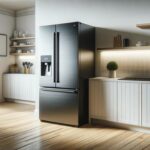Understanding What Fiberglass Grating Is
Fiberglass grating, also known as FRP grating (Fiber Reinforced Plastic), is a composite material made by combining fiberglass with resin to create a strong, durable grid-like panel. This material is used in a wide variety of industrial and commercial applications, especially in environments where traditional metal or wooden grating may deteriorate quickly. The unique composition of fiberglass grating gives it a number of advantages over conventional materials, including impressive strength-to-weight ratio, excellent resistance to environmental factors, and long-term cost-efficiency.
Typically, FRP grating is available in two main forms: molded and pultruded. Molded grating offers excellent bi-directional strength, while pultruded grating provides high load capacity in specific directions. This versatility allows fiberglass grating to be customized for different load-bearing needs and environmental conditions.
Why Durability and Corrosion Resistance Matter
One of the primary reasons for the increasing popularity of fiberglass grating is its superior resistance to corrosion and degradation. Unlike steel or aluminum, which can rust or corrode over time when exposed to moisture and chemicals, FRP grating is non-corrosive. This makes it especially suitable for use in harsh environments such as:
- Marine and offshore platforms
- Chemical processing plants
- Wastewater treatment facilities
- Food and beverage production areas
These settings often involve exposure to water, salt, acids, or other corrosive elements, where traditional materials would fail or require frequent maintenance. Fiberglass grating eliminates the need for coatings or galvanizing, which not only reduces maintenance costs but also lowers the risk of premature failure due to corrosion.
Lightweight and Easy to Install
Another advantage of fiberglass grating is its lightweight nature compared to metal alternatives. This characteristic significantly reduces the labor and equipment needed for transport and installation. In many cases, panels can be carried and installed manually without the use of heavy machinery. This results in faster project completion, reduced labor costs, and fewer safety concerns on the job site.
In addition to being light, fiberglass grating is also:
- Non-conductive, improving safety around electrical equipment
- Slip-resistant, thanks to its textured surface
- Fire-retardant, depending on the resin system used
These features make it ideal for walkways, platforms, and stair treads in areas where safety and ease of access are critical.
Cost-Effectiveness Over Time
While the initial cost of fiberglass grating might appear higher than some traditional materials, it often proves to be more cost-effective in the long run. The extended lifespan, low maintenance requirements, and resistance to wear and tear all contribute to a lower total cost of ownership over time. With fewer repairs, replacements, and downtime, businesses can allocate resources more efficiently and avoid unexpected operational interruptions.
Moreover, FRP grating’s durability helps reduce the frequency of inspections and safety concerns, which can be particularly valuable in regulated industries. Its resistance to UV radiation also means it retains its structural integrity and appearance longer, even in outdoor applications exposed to sunlight year-round.
Wide Range of Applications
Fiberglass grating is used across a broad spectrum of industries, thanks to its adaptability and performance. Common applications include:
- Industrial flooring and catwalks
- Trench covers and drain grates
- Access platforms and mezzanines
- Architectural features such as sunscreens and fencing
Its ability to perform reliably in both indoor and outdoor settings makes it a preferred choice not only for industrial use but also for commercial and even residential projects. The material can be manufactured in various colors and styles, allowing it to meet both functional and aesthetic requirements.
Additionally, fiberglass grating complies with many industry standards for safety and performance, further validating its role as a dependable alternative to traditional building materials.
Conclusion: A Smart Choice for Modern Projects
As industries and infrastructure projects evolve, the demand for durable, safe, and cost-efficient materials grows. Fiberglass grating meets these needs by offering an exceptional balance of strength, resistance, and practicality. Its growing adoption across various sectors is a testament to its reliability and value. For project managers, engineers, and facility operators seeking long-term solutions that minimize maintenance and maximize safety, fiberglass grating presents a compelling option worth considering.








